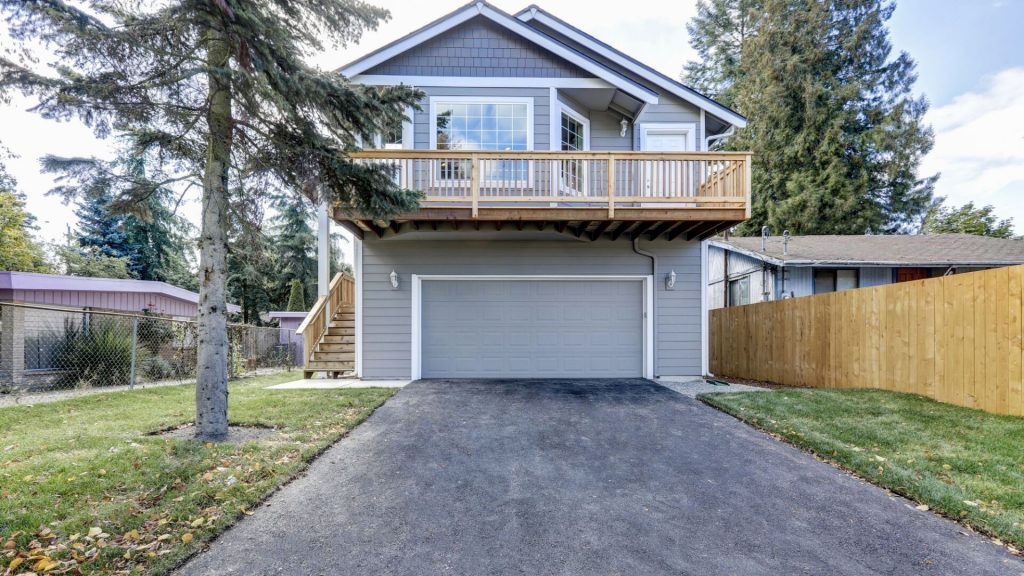What is an ADU and Why Would I Want One?
ADUs are Accessory Dwelling Units. Some people refer to them as Granny Flats or In-Law’s Quarters. They’re fully-equipped, additional but separate living spaces, built onto existing homes. The intent of an ADU is usually for use as living quarters for extended family or guests, or as a rental unit.
Advantages
ADUs are great for rental income, or for extended family to live together. Either way, it’s one of the better improvements you can make to your home, because appraisers and banks both see it as an added value to the structure, which benefits you, and it offers you additional flexibility with your life and the property.
If you’re an empty nester, for instance, you can add an ADU to your home, either as an apartment over the garage, say, or in a separate casita in the backyard, and then employ if for a series of steps over many years. Pre-retirement, you may use the space for when guests or family come for extended stays. Post-retirement, you may use it as a rental unit to pad your income. Then, in your sunset years, you can use the ADU for family or a hired caretaker to live in.
You can even outfit the house for more extensive possibilities down the road. In one recent case, Winthorpe designed an ADU with an elevator shaft. For now, there is no elevator and that shaft is disguised as storage off the garage and as closets on the second floor. But should that family decide to install an elevator down the road, the shaft is already in place, minimizing the work and expense later on.
Challenges
There are some significant challenges that can come with trying to build an ADU in the Washington DC and Maryland areas. There are lots of specifications as to what you can and cannot do, and those stipulations differ by area. If you get too far into the design process with an architect or builder who isn’t familiar with those stipulations, you can get pretty far down the path, to great expense, before discovering your plan can’t be executed. We’ve seen just such situations where a client went to an architect, had complete plans drawn, and even got well into the permitting process before they discovered their county wouldn’t allow what they’d planned. It causes so much frustration, because the client doesn’t understand why whomever they hired would draw up plans that can’t be executed. Then they have to start from scratch. It’s time-consuming and expensive.
So, it’s critically important to hire someone who has experience in building ADUs. You want to hire someone who is familiar with ADUs and the area in which you live, so they can tell you up front what is and isn’t allowed. A design-build company like Winthorpe, who has experience with ADUs and are familiar with the differing county requirement, alleviates all those headaches.
 How Counties Differ
How Counties Differ
Here are just a few examples of how different each county’s requirements are for ADUs.
In Howard County, a certain percentage of the ADU structure must be attached to the main part of the house.
In D.C. an ADU can be a freestanding structure, which can also be a garage on the first level, which allows you to have a garage with an apartment above. However, D.C. has strict height restrictions, requires the ADU be a specific minimum distance from a main road, and has specifications regarding the size and square footage of the existing home, to name a few.
Montgomery County is slightly different, in that they only allow so many ADUs within a certain area. So, the first thing you and your design-build team want to do is find out how many ADUs are in your area.
Anne Arundel County operates under a sort of combination of Howard and Montgomery County stipulations.
So, for each county, you need to know how the structure is going to be used, find out what’s allowed, and then start the design process from there.
Example Of Using ADUs
These days, many parents are allowing their recently college-graduated children to move back home, for a variety of reasons. Sometimes it’s a convenient way to allow their kids a low/no-rent option for living while they find work. Other times, a parent may have a health issue and will benefit from having an able-bodied adult son or daughter on premises to help out. Since the ADU is a separate living space, they don’t have to live on top of one another, but are only steps away. So, everyone has their privacy but still have the convenience of being nearby, able to check on one another.
Another great use of these spaces are to allow families to raise young children in a home with more than one generation. Retired grandparents may occupy the ADU and take care of the grandkids in the main house when they get home from school every day.
Alternatively, ADUs are wonderful rental units, either for college students or long-term local residents, or as AirBnB rentals. This is great potential income, where the landlords are literally on the same property overseeing their investment every day.
A Case Study
Winthorpe recently had a client who wanted an ADU. Their kids are all in college but come home to visit frequently. And the parents travel and lot, which means they weren’t making much use of the main house. So they wanted an apartment added to their property. Their intent is to rent out the main house for short-term rentals, like Airbnb, for additional income. The homeowners will live in the apartment. But when their kids are going to be visiting, they can plan not to rent out the main house so their kids can stay there. This way the property allows the family to be together when time allows, but is otherwise generating income, even when the owners are abroad.





